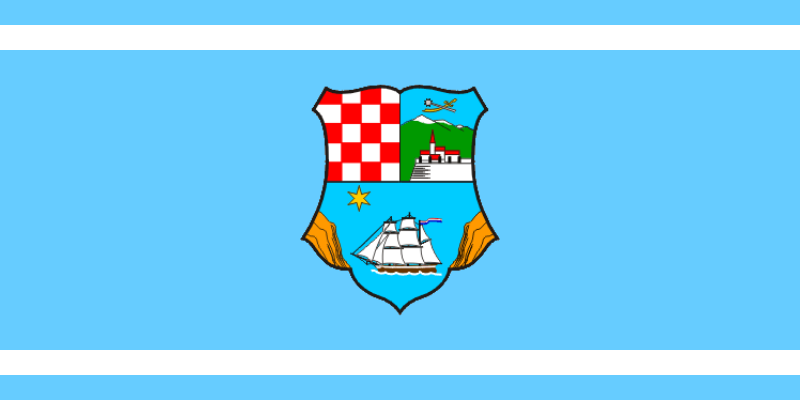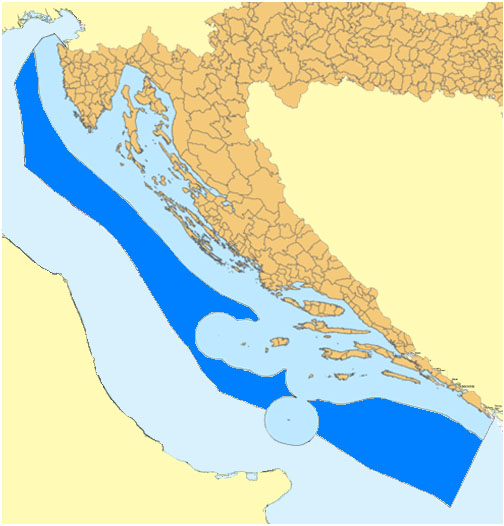|
Vinodol, Croatia
Vinodol (; ) is a municipality in the Primorje-Gorski Kotar County in western Croatia. The total population of the municipality is 3,577 people, in the following settlements: * Bribir, population 1,695 * Drivenik, population 308 * Grižane-Belgrad, population 953 * Tribalj, population 621 The population is 93.4% Croats. The Law codex of Vinodol, a medieval Croatian codex, was made in and named after this region. The Vinodol Hydroelectric Power Plant is located in the region. The Vinodol Channel is the part of the Adriatic Sea to the south of the region. Notable people Notable people that were born or lived in Vinodol include: * Juraj Juričić (?–1578), Croatian-Slovenian Protestant preacher and translator * Julije Klović or Giulio Clovio (1498-1578), Croatian illuminator miniaturist painter considered the greatest illuminator of Italian high renaissance period See also * Geography of Croatia The geography of Croatia is defined by its location at the crossroads ... [...More Info...] [...Related Items...] OR: [Wikipedia] [Google] [Baidu] |
Municipalities Of Croatia
Municipalities in Croatia (; plural: ''općine'') are the second-lowest administrative unit of government in the country, and along with List of cities in Croatia, cities and towns (''grad'', plural: ''gradovi'') they form the second level of administrative subdisivion, after Counties of Croatia, counties. Each municipality consists of one or more settlements (''naselja'') , which are the third-level spatial units of Croatia. Though equal in powers and administrative bodies, municipalities and towns differ in that municipalities are usually more likely to consist of a collection of villages in rural or suburban areas, whereas towns are more likely to cover urbanised areas. Law of Croatia, Croatian law defines municipalities as local self-government units which are established, in an area where several inhabited settlements represent a natural, economic and social entity, related to one other by the common interests of the area's population. As of 2023, the 21 counties of Croatia ... [...More Info...] [...Related Items...] OR: [Wikipedia] [Google] [Baidu] |
Geography Of Croatia
The geography of Croatia is defined by its location at the crossroads of Central Europe and Southeast Europe, and the wider region of Southern Europe. Croatia's territory covers , making it the 127th largest country in the world. Bordered by Slovenia in the northwest, Hungary in the northeast, Bosnia and Herzegovina and Serbia in the east, Montenegro in the southeast and the Adriatic Sea in the south, it lies mostly between latitudes 42nd parallel north, 42° and 47th parallel north, 47° N and longitudes 13th meridian east, 13° and 20th meridian east, 20° E. Croatia's territorial waters encompass in a wide zone, and its internal waters located within the Baseline (sea), baseline cover an additional . The Pannonian Plain and the Dinaric Alps, along with the Adriatic Basin, represent major Geomorphology, geomorphological parts of Croatia. Lowlands make up the bulk of Croatia, with elevations of less than above sea level recorded in 53.42% of the country. Most of the lowland ... [...More Info...] [...Related Items...] OR: [Wikipedia] [Google] [Baidu] |
Giulio Clovio
Juraj Julije Klović (; 1498 – 5 January 1578) was a Croatian-Italian illuminator, miniaturist, and painter born in the Kingdom of Croatia, who was mostly active in Renaissance Italy. He is considered the greatest illuminator of the Italian High Renaissance, and arguably the last very notable artist in the long tradition of the illuminated manuscript, before some modern revivals. Biography Giulio Clovio was born in Grižane, a village in Kingdom of Croatia (today's Croatia).The Life and Works of Giorgio Giulio Clovio, Miniaturist: with notices of his contemporaries, and of the art of decoration in the Sixteenth Century - by John William Bradley – 1891 He came from a Croatian family, Bradley, 2004 (reprint), pp. 368–369 and he is known as ''Clovio Croata.'' It is not known where he had his early training, but he may have studied art with monks at Rijeka of Novi Bazar when he was young. He moved to Italy at age 18 and entered the household of Cardinal Marino Grimani ... [...More Info...] [...Related Items...] OR: [Wikipedia] [Google] [Baidu] |
Juraj Juričić
Juraj Juričić (? – October 26, 1578; , first name also spelled ''Jur, Jurj, Gjuro, Jurai, Georg'',Marn, Josip. 1883. ''Knjiga Slovenska v dobah XVI. XVII. veka'' (= ''Jezičnik'' 21). Ljubljana: Rudolf Milic, p. 11. surname also spelled ''Jurischitsch, Jureschitsch, Jereschitz''), was a Croatian Protestant preacher and translator. Born in Croatia, Juričić translated and wrote in German, Slovenian and Croatian. In his Slovenian translations there are many elements of Croatian. Juričić was born in Vinodol, Croatia.Vorndran, Rolf. 1977. ''Südslawische Reformationsdrucke in der Universitätsbibliothek Tübingen''. Tübingen: J. C. B. Mohr. He arrived in Ljubljana 1560. As early as 1547 he preached in Kamnik "in the spirit of Protestantism," and later in Ljubljana, where he joined the Reformation. In 1561, he was forbidden to preach in the church of the Teutonic knights. In 1561 or 1562 he replaced Primož Trubar in the Ljubljana Evangelical Church of St. Elizabeth. At about ... [...More Info...] [...Related Items...] OR: [Wikipedia] [Google] [Baidu] |
Adriatic Sea
The Adriatic Sea () is a body of water separating the Italian Peninsula from the Balkans, Balkan Peninsula. The Adriatic is the northernmost arm of the Mediterranean Sea, extending from the Strait of Otranto (where it connects to the Ionian Sea) to the northwest and the Po Valley. The countries with coasts on the Adriatic are Albania, Bosnia and Herzegovina, Croatia, Italy, Montenegro, and Slovenia. The Adriatic contains more than 1,300 islands, mostly located along its eastern coast. It is divided into three basins, the northern being the shallowest and the southern being the deepest, with a maximum depth of . The prevailing currents flow counterclockwise from the Strait of Otranto. Tidal movements in the Adriatic are slight, although acqua alta, larger amplitudes occur occasionally. The Adriatic's salinity is lower than the Mediterranean's because it collects a third of the fresh water flowing into the Mediterranean, acting as a dilution basin. The surface water temperatures ... [...More Info...] [...Related Items...] OR: [Wikipedia] [Google] [Baidu] |
Vinodol Channel
Vinodol Channel ( or ) is a channel between the island of Krk and the Croatian coastline A coast (coastline, shoreline, seashore) is the land next to the sea or the line that forms the boundary between the land and the ocean or a lake. Coasts are influenced by the topography of the surrounding landscape and by aquatic erosion, su ... proceeding past Jadranovo, Dramalj, and Crikvenica to Novi Vinodolski. Landforms of Croatia Adriatic Sea Channels of the Mediterranean Sea Landforms of Primorje-Gorski Kotar County Channels of Europe {{Croatia-geo-stub ... [...More Info...] [...Related Items...] OR: [Wikipedia] [Google] [Baidu] |
Vinodol Hydroelectric Power Plant
Vinodol Hydro Power Plant is a large power plant in Croatia that has three turbines with a nominal capacity of 30 MW each having a total capacity of 90 MW. It is operated by Hrvatska elektroprivreda Hrvatska elektroprivreda (HEP Group) is a national power company in Croatia which has been engaged in Electricity generation, electricity production, Electric power transmission, transmission and Electricity distribution, distribution for more th .... External links Hydroelectric power stations in Croatia Buildings and structures in Primorje-Gorski Kotar County Yugoslav Croatian architecture {{Hydroelectric-power-plant-stub ... [...More Info...] [...Related Items...] OR: [Wikipedia] [Google] [Baidu] |
Law Codex Of Vinodol
Law code of Vinodol or Vinodol statute () is one of the oldest law texts written in the Chakavian dialect of Croatian and is among the oldest Slavic codes. Russkaya Pravda is the only older code in Slavdom. It was written in the Glagolitic alphabet. It was originally compiled in 1288 by a commission of 42 members in Novi Vinodolski, a town on the Adriatic Sea coast in Croatia, located south of Crikvenica, Selce and Bribir and north of Senj. However, the code itself is preserved in a 16th-century copy. The statute A paragraph was set to define the relation between the dukes and the peasantry of the region. It is the oldest among all Croatian city statutes, which represented an agreement between the people of Vinodol and their new liege lords Frangipani, the counts of Krk. It contains important information about the feudal law in this area which had replaced the tribal customs of an earlier period. The Vinodol Statute provides a rare contemporary picture of the life and political ... [...More Info...] [...Related Items...] OR: [Wikipedia] [Google] [Baidu] |
Croats
The Croats (; , ) are a South Slavs, South Slavic ethnic group native to Croatia, Bosnia and Herzegovina and other neighboring countries in Central Europe, Central and Southeastern Europe who share a common Croatian Cultural heritage, ancestry, Culture of Croatia, culture, History of Croatia, history and Croatian language, language. They also form a sizeable minority in several neighboring countries, namely Croats of Slovenia, Slovenia, Burgenland Croats, Austria, the Croats in the Czech Republic, Czech Republic, Croats in Germany, Germany, Croats of Hungary, Hungary, Croats of Italy, Italy, Croats of Montenegro, Montenegro, Croats of Romania, Romania, Croats of Serbia, Serbia and Croats in Slovakia, Slovakia. Due to political, social and economic reasons, many Croats migrated to North and South America as well as New Zealand and later Australia, establishing a Croatian diaspora, diaspora in the aftermath of World War II, with grassroots assistance from earlier communities an ... [...More Info...] [...Related Items...] OR: [Wikipedia] [Google] [Baidu] |
Grižane-Belgrad
Grižane-Belgrad is a village in Primorje-Gorski Kotar County of Croatia. It is located near Crikvenica and Novi Vinodolski. It has a population of 953 (census 2011) and the post code HR-51244. The modern-day settlement includes the former villages Grižane and Belgrad, and numerous nearby hamlets. The Grižane Castle overlooks the village. History Between 1871 and 1875, Selce obćina, Grižane obćina, Belgrad obćina, Drvenik obćina, Sveta Jelena obćina and Sveti Jakov obćina were all merged as Grižane-Crkvenica obćina. Demographics In 1895, the ''obćina'' of Grižane-Belgrad (court at Grižane), with an area of , belonged to the ''kotar'' of Novi (Novi court but Selce electoral district) in the Modruš-Rieka ''županija'' (Ogulin court and financial board). There were 711 houses, with a population of 4100. Its 23 villages and 14 hamlets were divided for taxation purposes into 2 ''porezne obćine'', under the Bakar office. Notable people * Giulio Clovio ... [...More Info...] [...Related Items...] OR: [Wikipedia] [Google] [Baidu] |





